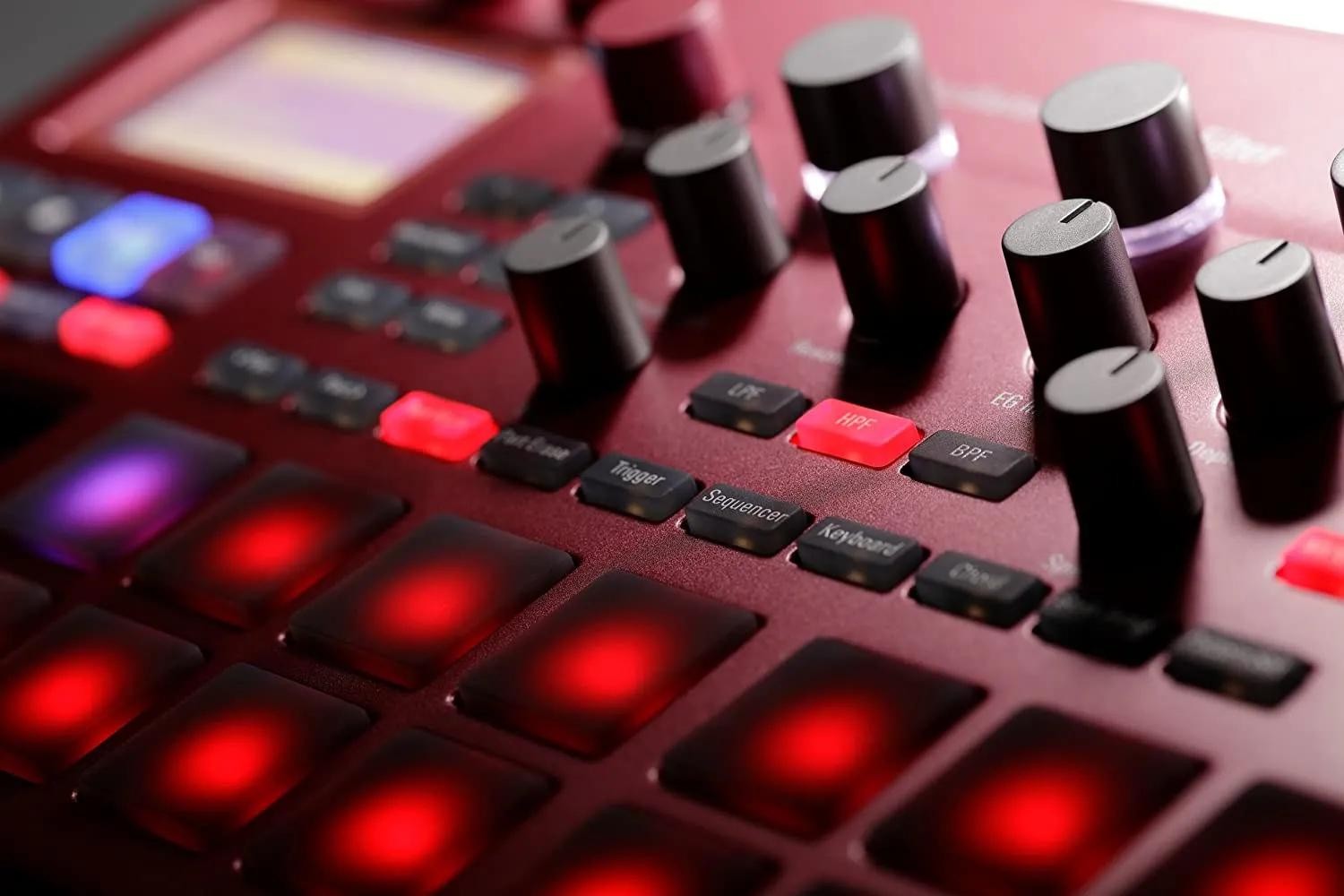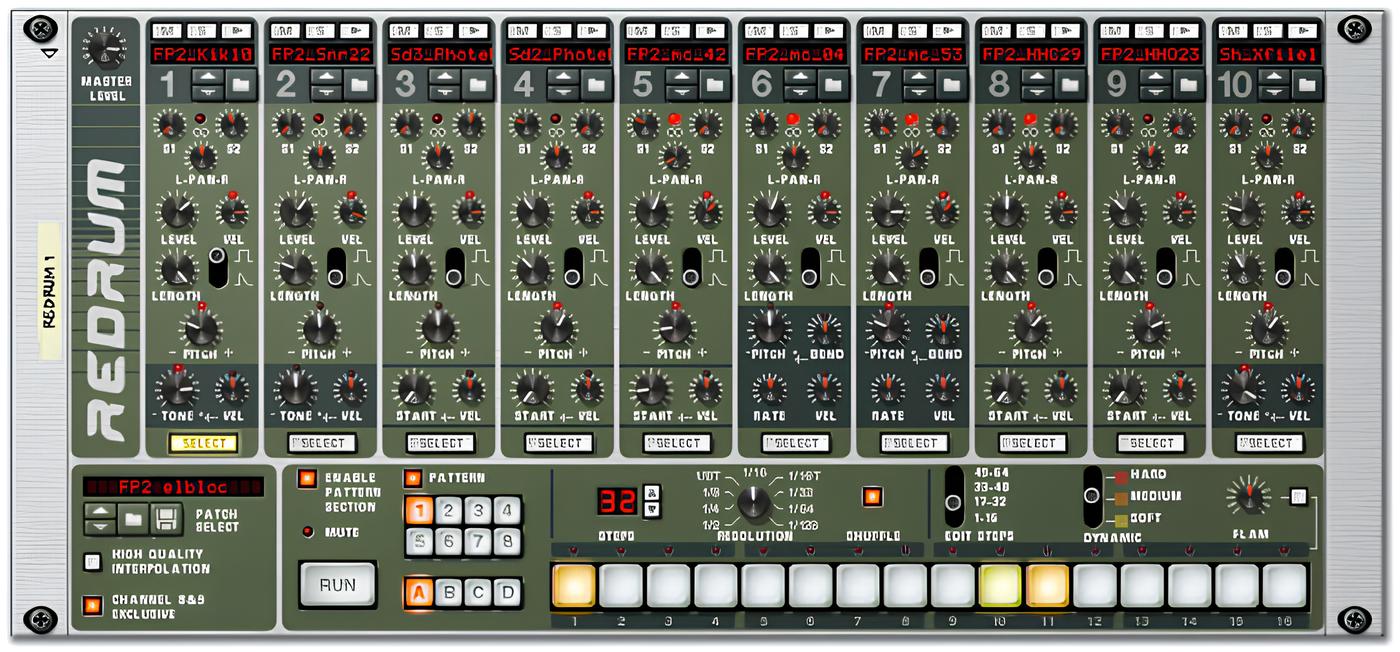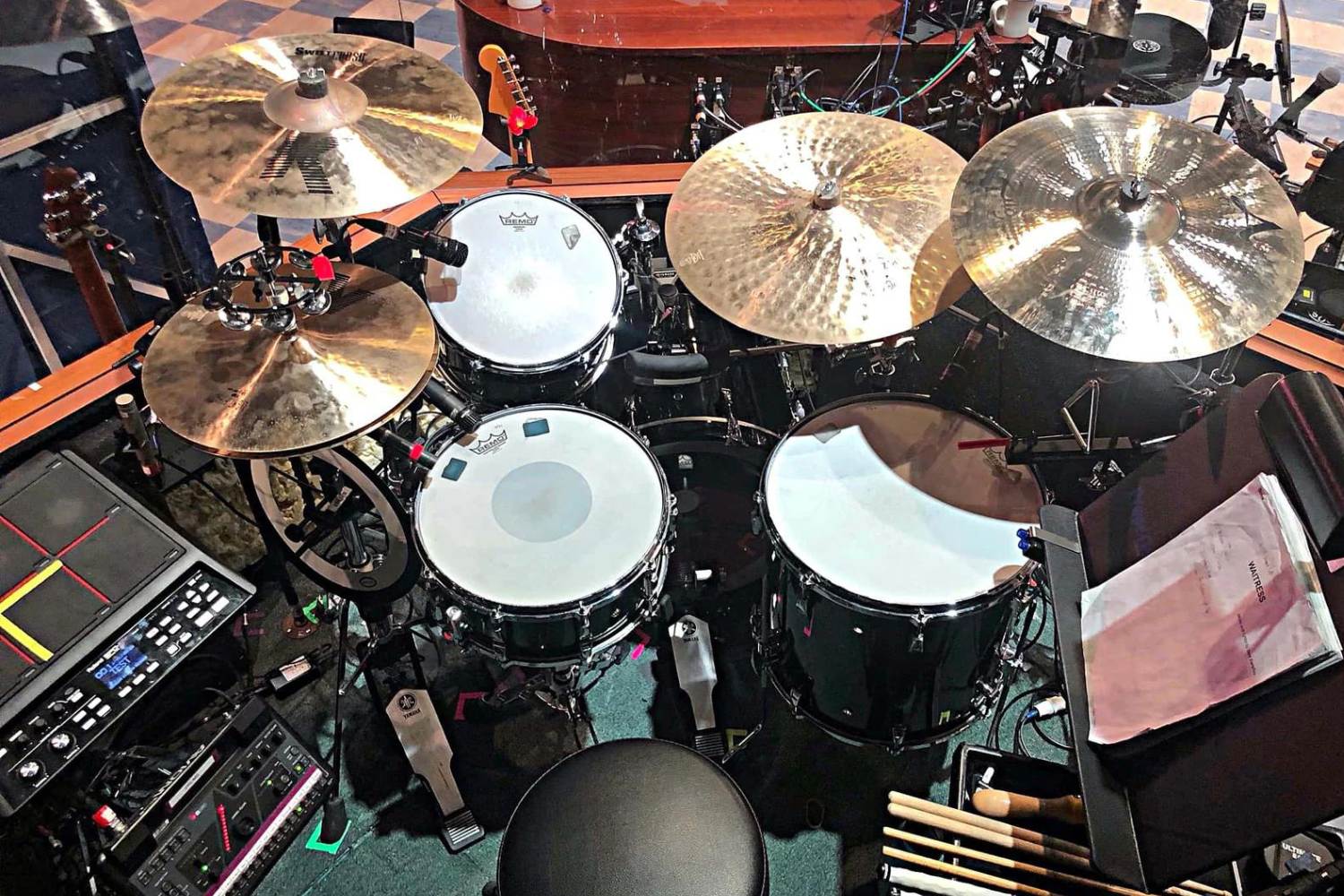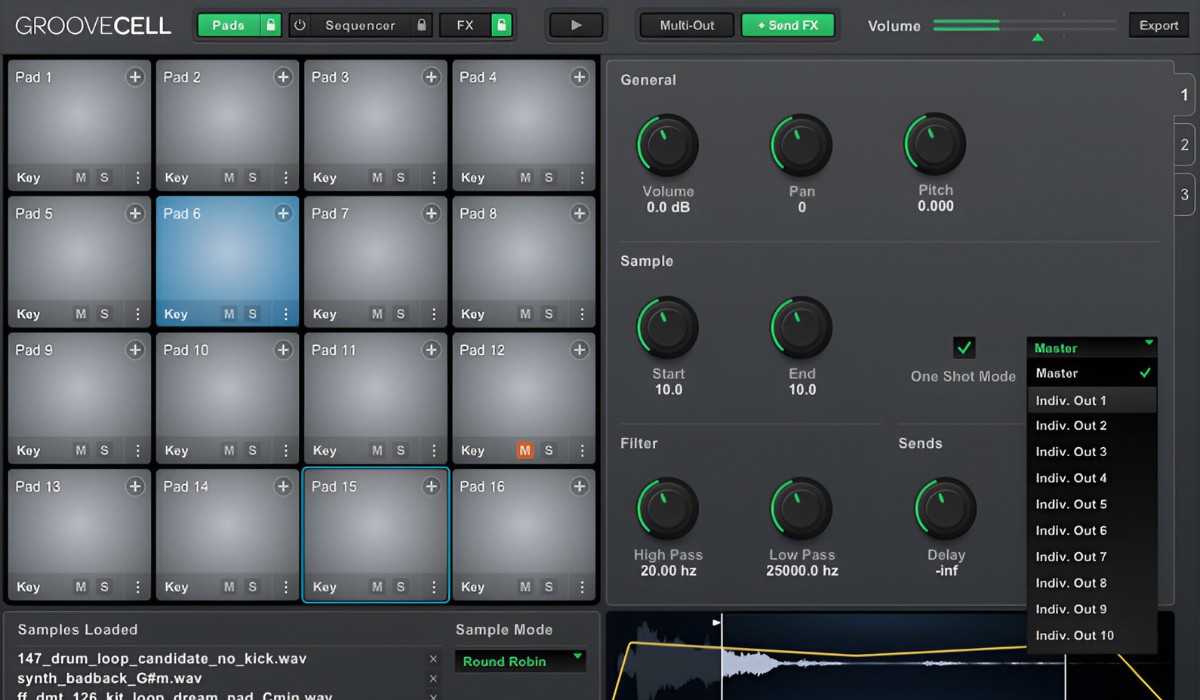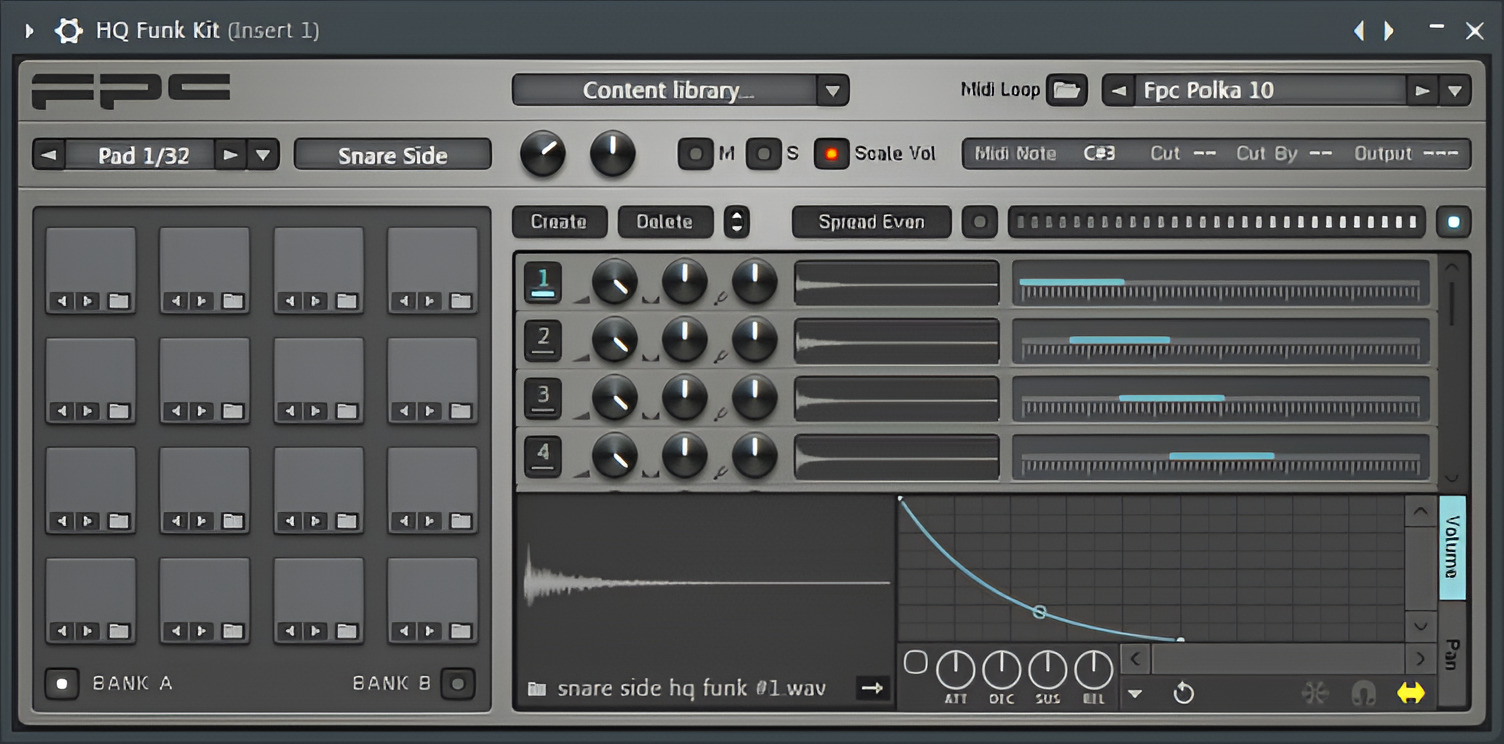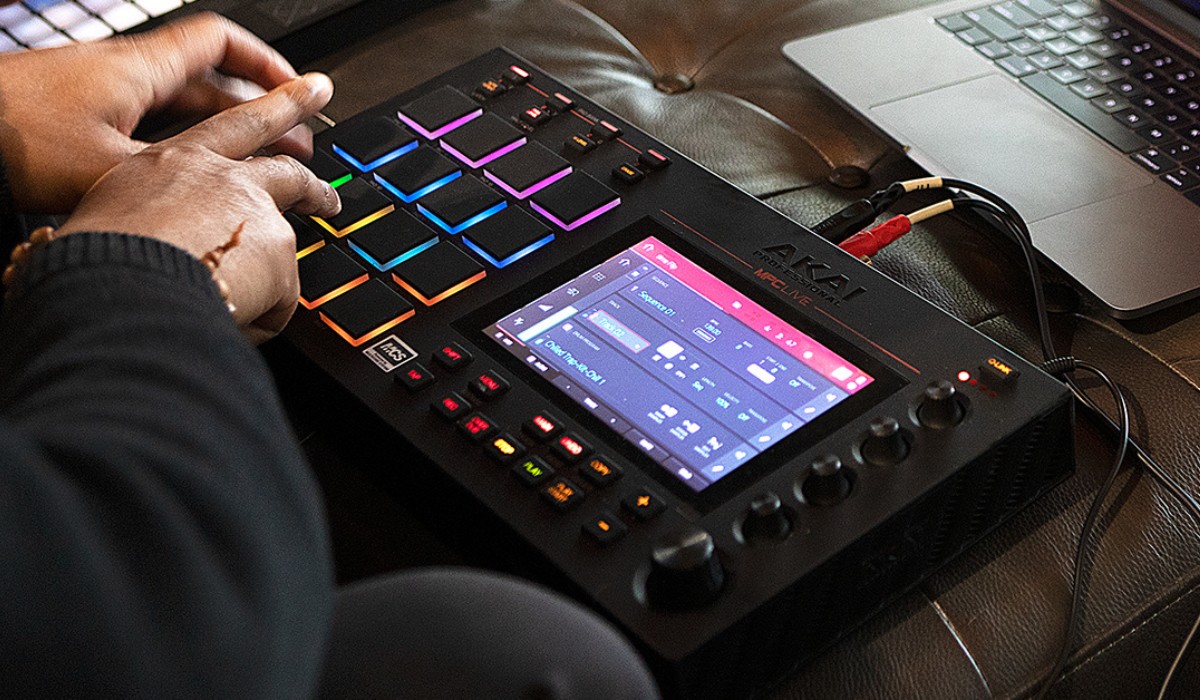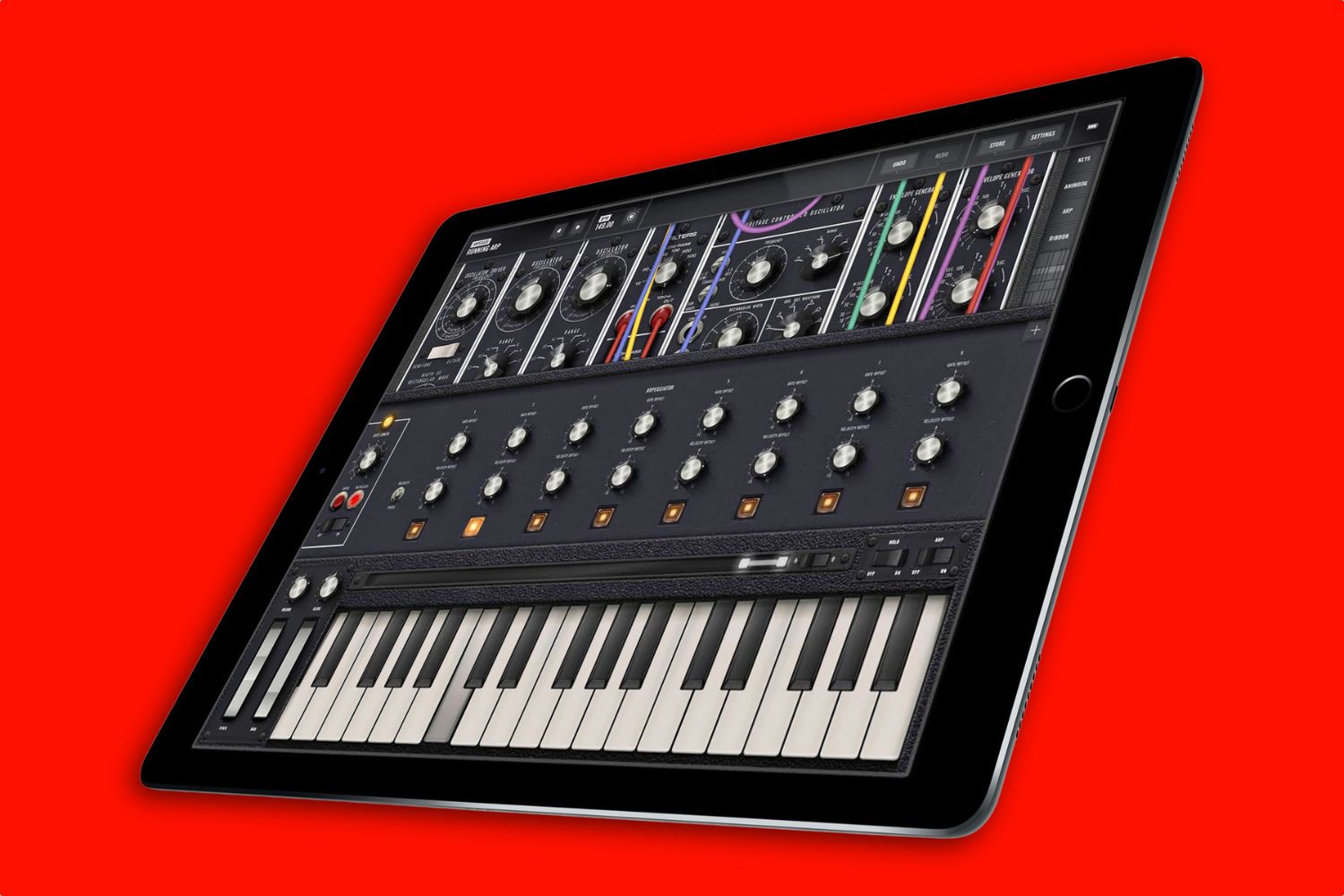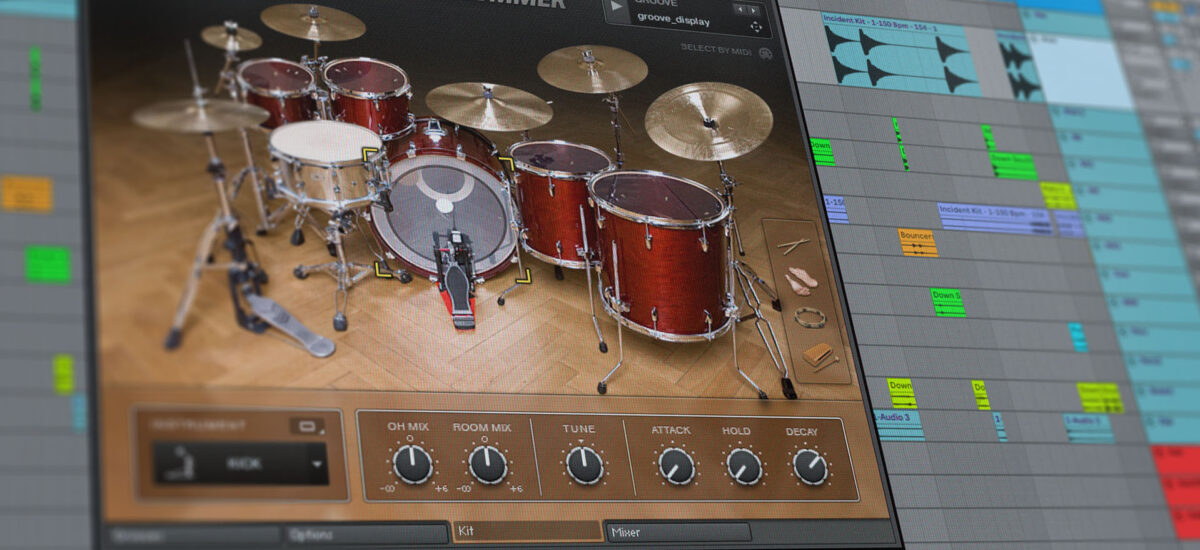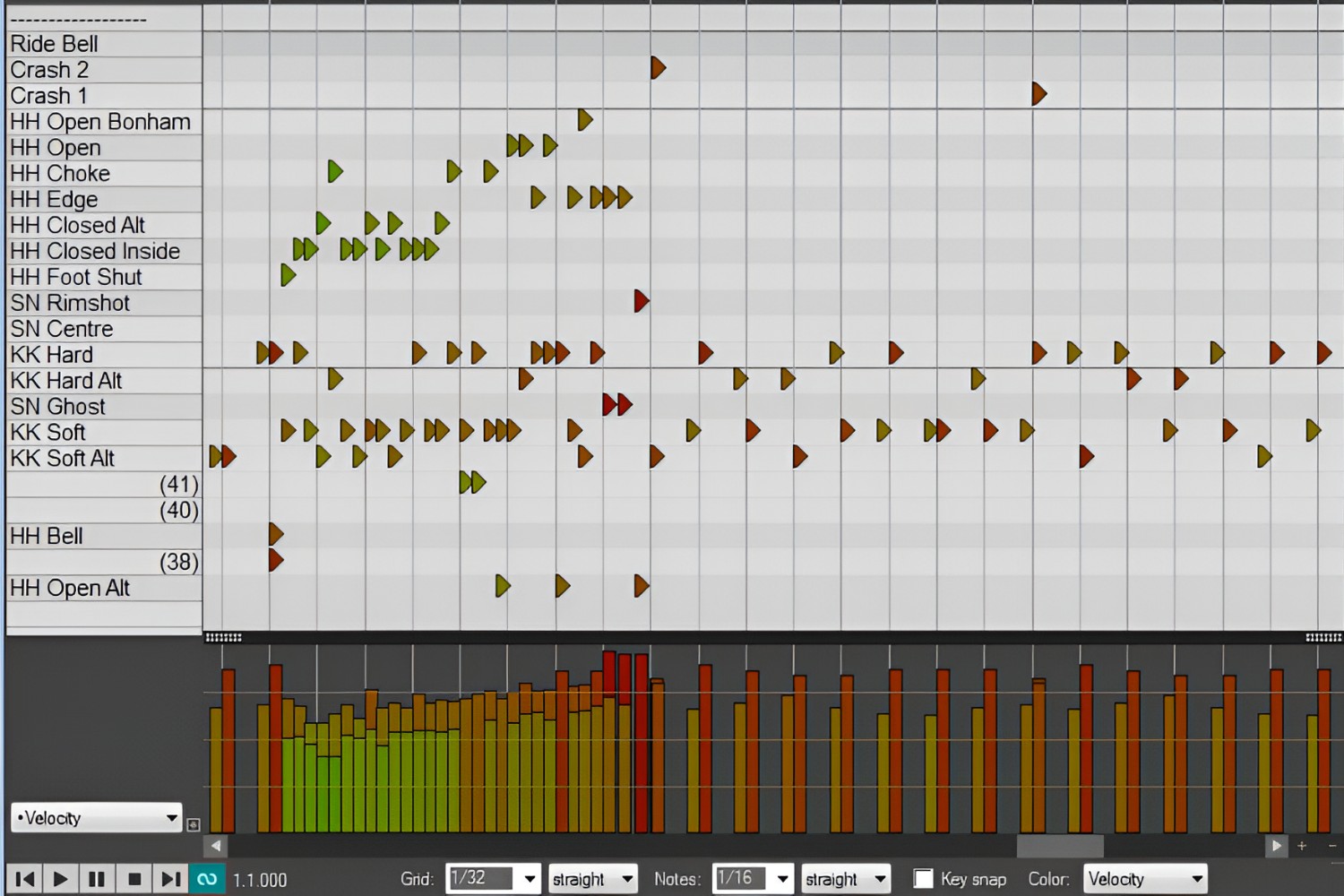Introduction
So, you've decided to dive into the world of music production and are curious about using a drum machine to enhance your beats and rhythms. Whether you're a seasoned musician or just starting out, a drum machine can be an invaluable tool for adding depth and complexity to your music. This versatile piece of equipment allows you to create unique drum patterns, experiment with different sounds, and craft dynamic beats that can elevate your compositions to new heights.
In this guide, we'll explore the ins and outs of using a drum machine, from understanding its basic functions to integrating it seamlessly into your music production workflow. We'll cover everything from selecting the right drum machine for your needs to programming intricate beats and patterns, adding variation and dynamics, and maximizing the potential of this powerful tool.
If you've ever felt limited by pre-made drum loops or sampled beats, a drum machine offers a creative outlet for crafting original rhythms that reflect your unique style and musical vision. Whether you're interested in electronic music, hip-hop, rock, or any other genre, a drum machine can serve as a catalyst for unleashing your creativity and pushing the boundaries of your sound.
So, let's embark on this journey together and unlock the full potential of your drum machine. By the end of this guide, you'll have the knowledge and confidence to harness the power of this innovative device and infuse your music with captivating, one-of-a-kind rhythms. Let's dive in and explore the fascinating world of drum machines!
Understanding the Basics of a Drum Machine
At its core, a drum machine is a versatile electronic instrument designed to emulate the sounds of various percussion instruments, such as kick drums, snares, hi-hats, and cymbals. It offers a wide range of pre-programmed drum sounds and patterns, as well as the flexibility to create and customize your own beats from scratch. Understanding the fundamental components and functions of a drum machine is essential for harnessing its full potential in your music production endeavors.
One of the key features of a drum machine is its sequencer, which allows you to arrange and program rhythmic patterns with precision. The sequencer provides a grid-like interface where you can input specific drum sounds at precise intervals, creating intricate and complex rhythms. Additionally, most modern drum machines offer a variety of built-in effects, sound-shaping parameters, and performance controls, enabling you to manipulate and sculpt your drum sounds to suit your artistic vision.
Furthermore, many drum machines come equipped with a library of preset patterns and beats, serving as a valuable source of inspiration and a starting point for your own compositions. These patterns can range from classic drum grooves to experimental and avant-garde rhythms, providing a rich palette of sonic possibilities to explore and integrate into your music.
Understanding the concept of step sequencing is crucial when working with a drum machine. Step sequencing involves programming individual drum hits or sounds on specific steps within a musical grid, allowing you to create complex and syncopated patterns with precision. This method of composition empowers you to craft unique rhythms and experiment with different time signatures, tempos, and accents, ultimately giving your music a distinct and expressive character.
By familiarizing yourself with the basic functions and capabilities of a drum machine, you can unlock a world of creative potential and elevate your music production to new heights. Whether you’re a solo artist, producer, or part of a band, integrating a drum machine into your setup can open up endless possibilities for crafting compelling and innovative rhythmic arrangements.
Choosing the Right Drum Machine for Your Needs
When selecting a drum machine, it’s essential to consider your specific musical preferences, production requirements, and performance goals. The market offers a diverse array of drum machines, each with its own unique features, sound capabilities, and user interfaces. By understanding the key factors to evaluate, you can make an informed decision and choose a drum machine that aligns with your creative vision and technical requirements.
- Sound Quality and Variety: Evaluate the sound quality and diversity of the drum machine’s built-in sounds. Consider whether it offers a broad selection of classic and modern drum sounds, as well as the ability to import or create custom samples to expand your sonic palette.
- Sequencing Capabilities: Assess the sequencer’s functionality and flexibility. Look for features such as step sequencing, real-time recording, pattern chaining, and the ability to create and manipulate intricate rhythmic patterns with ease.
- Performance Controls: Consider the presence of performance-oriented controls, such as velocity-sensitive pads, touch strips, and real-time parameter manipulation, which can enhance your expressiveness and interaction with the drum machine during live performances and studio sessions.
- Integration with DAW and External Gear: Determine whether the drum machine seamlessly integrates with your digital audio workstation (DAW) and other studio equipment. Compatibility with MIDI, USB, and analog connectivity can streamline your workflow and expand your creative possibilities.
- Portability and Form Factor: If portability is a priority, consider the size, weight, and overall form factor of the drum machine. Compact and lightweight designs are ideal for musicians who require mobility and flexibility in their setups.
- User Interface and Workflow: Assess the user interface, menu navigation, and overall workflow of the drum machine. An intuitive and ergonomic interface can significantly impact your productivity and creativity, allowing you to focus on musical ideas rather than technical hurdles.
By carefully evaluating these factors and considering how they align with your musical style and production environment, you can make an informed decision when choosing a drum machine that meets your specific needs. Whether you prioritize sound versatility, performance capabilities, or seamless integration with your existing setup, the right drum machine can become an indispensable tool in your musical arsenal, empowering you to explore new sonic horizons and elevate your creative output.
Connecting and Setting Up Your Drum Machine
Before delving into the sonic possibilities of your drum machine, it’s crucial to ensure that it is seamlessly integrated into your music production setup. Properly connecting and configuring your drum machine not only ensures optimal functionality but also sets the stage for a smooth and efficient creative process. Let’s explore the essential steps for connecting and setting up your drum machine.
Audio and Power Connections: Begin by connecting the audio outputs of your drum machine to your audio interface, mixer, or speakers using appropriate cables. Ensure that the connections are secure and that the audio levels are calibrated to prevent distortion and maintain clarity. Additionally, power your drum machine using the supplied adapter or via USB, depending on the model’s power requirements.
MIDI and Sync Options: If your drum machine offers MIDI connectivity, consider linking it to your MIDI interface or controller to enable communication with other MIDI-equipped devices in your studio. Furthermore, explore synchronization options, such as MIDI clock, USB sync, or analog sync, to ensure that your drum machine stays in perfect tempo alignment with your other studio gear.
Software Integration: If your drum machine interfaces with music production software or a digital audio workstation (DAW), install any necessary drivers or software updates to facilitate seamless communication between the two. This integration can unlock additional features, such as MIDI mapping, DAW control, and software instrument hosting, expanding the creative potential of your drum machine.
Performance Setup: When preparing for live performances or studio recording sessions, consider the physical placement of your drum machine within your setup. Position it within comfortable reach, ensuring easy access to its controls and pads for expressive performance and real-time manipulation of drum patterns and sounds.
Sound Routing and Processing: Explore the routing options within your drum machine to determine how its individual drum sounds and outputs are processed and mixed. Familiarize yourself with onboard effects, sound shaping parameters, and output routing to tailor the sonic character of your drum machine to suit your musical vision.
By meticulously attending to these setup considerations, you can establish a solid foundation for incorporating your drum machine into your music production workflow. A well-configured and seamlessly integrated drum machine not only streamlines your creative process but also empowers you to explore new sonic territories and express your musical ideas with precision and finesse.
Programming Beats and Patterns
Once your drum machine is connected and ready to go, it’s time to dive into the exciting process of programming beats and patterns. Whether you’re aiming for a pulsating dance groove, a laid-back hip-hop rhythm, or an intricate rock beat, the drum machine serves as your canvas for crafting compelling and dynamic percussive arrangements.
Step Sequencing: Utilize the drum machine’s step sequencer to input individual drum hits and sounds at precise intervals, creating rhythmic patterns with meticulous control. Experiment with different time signatures, swing settings, and accent patterns to imbue your beats with character and groove.
Real-Time Recording: Many drum machines offer real-time recording functionality, allowing you to perform and record drum patterns on the fly. This hands-on approach enables spontaneous creativity and expressive performance, capturing the nuances of your rhythmic ideas as they unfold in real time.
Layering and Sound Selection: Explore the diverse palette of drum sounds available in your drum machine, and experiment with layering multiple sounds to create rich and textured drum patterns. From classic drum machine sounds to custom samples and synthesized percussion, the possibilities for sonic exploration are endless.
Dynamic Control: Leverage velocity-sensitive pads and performance controls to infuse your drum patterns with dynamics and expression. Varying the velocity of individual drum hits can add a human touch to your sequences, mimicking the nuanced playing of a live drummer and enhancing the overall musicality of your beats.
Pattern Variation and Evolution: Develop evolving drum patterns by introducing subtle variations, fills, and transitions within your sequences. Experiment with parameter automation, such as filter sweeps, pitch modulation, and decay adjustments, to imbue your beats with movement and progression.
Quantization and Groove Templates: Utilize quantization settings and groove templates to refine the timing and feel of your drum patterns. Whether you prefer tight, quantized rhythms or loose, swung grooves, the drum machine’s quantization options allow you to tailor the rhythmic precision to suit your musical style.
By embracing these creative techniques and approaches, you can harness the full potential of your drum machine to craft captivating and dynamic beats and patterns. Whether you’re composing in the studio or performing live, the ability to program intricate and expressive rhythms is a cornerstone of modern music production, and the drum machine stands as a powerful ally in this sonic pursuit.
Adding Variation and Dynamics to Your Beats
While a solid foundation is essential, adding variation and dynamics to your beats elevates them to new heights, infusing your music with depth and emotion. The drum machine offers a myriad of tools and techniques to introduce nuanced changes, unexpected twists, and expressive dynamics to your rhythmic compositions.
Dynamic Accentuation: Utilize velocity-sensitive pads and controls to introduce dynamic accents within your beats. By varying the intensity of individual drum hits, you can create a sense of ebb and flow, adding emphasis and intrigue to specific elements of your patterns.
Fill Patterns and Breaks: Inject energy and excitement into your beats by incorporating fill patterns and breaks at strategic moments. Whether it’s a sudden drop to silence, a flurry of rapid drum hits, or a syncopated fill, these elements can create tension and release, keeping your listeners engaged and captivated.
Automation and Modulation: Experiment with real-time parameter automation and modulation to introduce evolving textures and timbral shifts within your drum patterns. From subtle filter sweeps to dramatic pitch modulation, these dynamic changes can add a sense of movement and progression to your beats.
Rhythmic Variation: Explore rhythmic variations such as polyrhythms, syncopated patterns, and irregular accents to break away from predictable rhythms and infuse your beats with complexity and intrigue. These rhythmic deviations can introduce a sense of unpredictability and creativity to your compositions.
Layering and Sound Design: Delve into the realm of sound design within your drum machine, layering complementary sounds, experimenting with synthesis parameters, and crafting unique sonic textures to add depth and character to your beats. By sculpting your drum sounds with precision, you can imbue your rhythms with a distinct sonic identity.
Pattern Morphing and Evolution: Embrace the concept of pattern morphing, where your beats gradually evolve over time through subtle changes in sound, rhythm, and structure. This gradual transformation can create a sense of narrative and progression within your compositions, keeping your audience engaged and intrigued.
By integrating these techniques into your beat programming and performance, you can breathe life and emotion into your rhythmic creations, ensuring that each beat tells a compelling story and engages the listener on a profound level. The art of adding variation and dynamics to your beats is a testament to the expressive power of the drum machine and its capacity to shape the sonic landscape of your music.
Incorporating Drum Machine into Your Music Production
Integrating a drum machine into your music production workflow opens up a world of creative possibilities, offering a versatile and expressive tool for shaping the rhythmic foundation of your compositions. Whether you’re a solo artist, producer, or part of a band, the drum machine serves as a valuable ally in crafting compelling and innovative sonic landscapes.
Rhythmic Architecture: The drum machine serves as the architect of your rhythmic arrangements, allowing you to construct intricate and captivating drum patterns that form the backbone of your music. By leveraging the diverse sound palette, sequencing capabilities, and dynamic controls of the drum machine, you can sculpt the rhythmic landscape of your compositions with precision and finesse.
Live Performance: For live performances, the drum machine offers a dynamic and interactive platform for bringing your beats to life on stage. Its intuitive interface, performance controls, and real-time manipulation capabilities empower you to deliver compelling and expressive drum performances, captivating audiences with infectious rhythms and energetic grooves.
Studio Production: In the studio environment, the drum machine becomes an indispensable tool for crafting polished and professional-sounding drum tracks. Whether you’re producing electronic music, hip-hop, pop, or rock, the drum machine’s sound-shaping parameters, sequencing flexibility, and integration with music production software enable you to realize your creative vision with precision and efficiency.
Collaborative Exploration: When collaborating with other musicians and producers, the drum machine serves as a catalyst for collaborative exploration and experimentation. Its ability to generate diverse drum sounds, intricate patterns, and dynamic rhythms fosters a collaborative environment where creative ideas can flourish, leading to the development of innovative and genre-defying musical compositions.
Sonic Innovation: By pushing the boundaries of traditional drum sounds and patterns, the drum machine empowers you to explore sonic innovation and artistic expression. Experiment with unconventional rhythms, experimental textures, and genre-blurring beats, leveraging the drum machine’s capabilities to carve out a distinct sonic identity that sets your music apart.
By seamlessly incorporating the drum machine into your music production endeavors, you unlock a realm of creative expression and sonic exploration, enriching your compositions with captivating rhythms and evocative beats. Whether in the studio or on stage, the drum machine stands as a versatile and indispensable tool for shaping the rhythmic landscape of your musical journey.
Tips for Getting the Most Out of Your Drum Machine
Mastering the art of utilizing a drum machine to its fullest potential can significantly enhance your music production and performance capabilities. Here are some valuable tips to help you extract the maximum creative and sonic potential from your drum machine:
- Experiment with Sound Layering: Explore the possibilities of layering multiple drum sounds to create rich and textured rhythms. By blending complementary sounds and adjusting their parameters, you can craft unique and dynamic percussive textures.
- Utilize Performance Controls: Leverage the expressive potential of velocity-sensitive pads, touch-strips, and real-time parameter manipulation to add dynamics and nuance to your drum performances. Embracing these performance controls can infuse your beats with a human touch and expressive character.
- Customize Sequencing and Swing: Experiment with unconventional sequencing patterns and swing settings to inject groove and personality into your beats. By deviating from standard quantization, you can create rhythms with a distinct and infectious feel.
- Explore Sound Design Capabilities: Delve into the sound design features of your drum machine, such as envelope shaping, effects processing, and synthesis parameters, to sculpt unique and innovative drum sounds that reflect your artistic vision.
- Integrate External Effects and Processing: Experiment with routing your drum machine’s outputs through external effects units, processors, and modular gear to expand the sonic palette and add depth and character to your drum sounds.
- Embrace Live Jamming and Improvisation: Allow for spontaneous creativity by engaging in live jamming sessions with your drum machine. Embracing improvisation can lead to unexpected rhythmic discoveries and inspire new musical ideas.
- Explore Genre Fusion and Experimentation: Challenge traditional genre boundaries by using the drum machine to experiment with hybrid rhythms and genre fusion. Blend diverse influences and styles to create innovative and boundary-pushing beats.
- Community and Online Resources: Engage with the vibrant online community of drum machine enthusiasts, where you can exchange tips, techniques, and inspiration. Online resources, tutorials, and forums can provide valuable insights and expand your creative horizons.
By incorporating these tips into your approach to using a drum machine, you can unlock its full potential as a versatile and expressive instrument for shaping captivating rhythms and dynamic beats. Embracing experimentation, innovation, and collaboration within the realm of drum machine music production can lead to the creation of compelling and groundbreaking sonic experiences.







